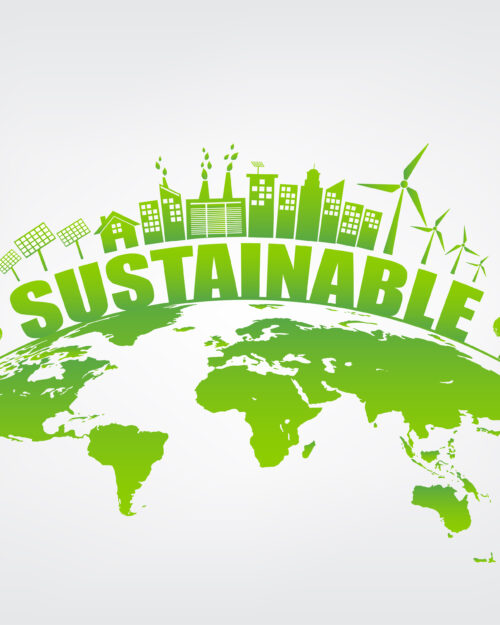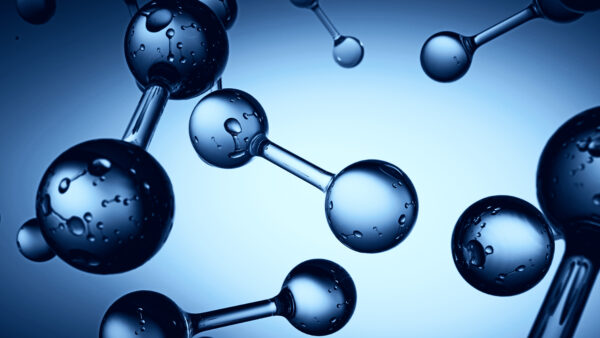July 18, 2023

By: AEOP Membership Council Member Ethan Zhou
There is a wide spectrum of colors of hydrogen, ranging from gray to pink. Now, you are probably thinking: “Wait a minute! Hydrogen is colorless, right?”
Technically, yes. But there are colorful classifications of hydrogen, and getting the right color of hydrogen is crucial for our sustainable future.
My interest in hydrogen grew while participating in the 2022 High School Mathematical Contest in Modeling. This contest challenged participating teams of high school students worldwide to build a model to predict global warming caused by carbon emissions. My team’s model revealed that reducing carbon emissions through determined actions is critical to prevent global warming from further exacerbating. Here you can access the simulator our team built based on our model to raise public awareness.
Hydrogen is a promising clean fuel alternative with the potential to revolutionize our energy system. Being the lightest element, it stores enormous energy per weight. It has a gravimetric energy density of 142 MJ/kg, almost three times that of gasoline and two hundred times that of lithium-ion batteries. Consumed as fuel, hydrogen produces only water and heat. It is also a favorable option for energy storage because hydrogen can be stored and deployed for peak demands to stabilize the grid system. A National Renewable Energy Laboratory’s study showed that hydrogen has “the greatest potential among technologies for seasonal energy storage in the future.” The International Energy Agency projects that hydrogen use will grow sixfold from today’s levels by 2050.
 However, hydrogen exists as a gas in tiny quantities on earth, less than 1 part per billion in volume, and must be produced from various sources, including fossil fuels, biomass, and water. Different production methods render colorful classifications of hydrogen, including gray, blue, green, pink, and black/brown hydrogen.
However, hydrogen exists as a gas in tiny quantities on earth, less than 1 part per billion in volume, and must be produced from various sources, including fossil fuels, biomass, and water. Different production methods render colorful classifications of hydrogen, including gray, blue, green, pink, and black/brown hydrogen.
Grey hydrogen is the most common and cheapest form of hydrogen. It is produced by a steam-methane reforming process that extracts hydrogen from natural gas but does not capture carbon emissions, resulting in a large carbon footprint. Blue hydrogen is produced by the same process; however, carbon emissions are captured and sequestered underground. Although blue hydrogen is usually considered clean due to its low carbon content, a recent New York Times report raised concerns about the negative climate impact of blue hydrogen. The report cites a study showing that “the greenhouse gas footprint of blue hydrogen was more than 20 percent greater than burning natural gas or coal.” Green hydrogen is the cleanest type of hydrogen produced by water electrolysis.This type of hydrogen splits water into hydrogen and oxygen, using clean energy like wind or solar energy. When the water electrolysis is powered by nuclear energy, the produced hydrogen is called pink hydrogen. Black/brown hydrogen is produced from coal through gasification and has an even larger carbon footprint than gray hydrogen.
Here is the catch: Hydrogen production is “almost exclusively from fossil fuels, resulting in nearly 900 Mt of CO2 emissions.” Green hydrogen accounts for less than 0.1 percent of hydrogen production. To develop a viable and sustainable hydrogen economy, it is imperative to increase the production of green hydrogen by investing in technologies that improve efficiency and decrease the cost of water electrolysis and enacting policies that favor green hydrogen.
Hydrogen is crucial as the world moves towards a more sustainable future. It is up to us to ensure that we use the right color of hydrogen to make it happen.
Works Cited
- Ajanovic, Amela, M. Sayer, and Reinhard Haas. “The economics and the environmental benignity of different colors of hydrogen.” International Journal of Hydrogen Energy 47.57 (2022): 24136-24154.
- “Answer to Energy Storage Problem Could Be Hydrogen.” The National Renewable Energy Laboratory, 25 June 2020, www.nrel.gov/news/program/2020/answer-to-energy-storage-problem-could-be-hydrogen.html. Accessed 15 Feb. 2023.
- “Global Hydrogen Review 2021: Executive summary.” The International Energy Agency, www.iea.org/reports/global-hydrogen-review-2021/executive-summary. Accessed 15 Feb. 2023.
- “Hydrogen.” Royal Society of Chemistry, www.rsc.org/periodic-table/element/1/hydrogen#:~:text=On%20Earth%2C%20hydrogen%20is%20found,Earth’s%20gravity%20into%20outer%20space. Accessed 15 Feb. 2023.
- “Hydrogen Production and Distribution.” U.S. Department of Energy, afdc.energy.gov/fuels/hydrogen_production.html#:~:text=Hydrogen%20can%20be%20produced%20from,on%20how%20it%20is%20produced. Accessed 15 Feb. 2023.
- Marchant, Natalie. “Grey, blue, green – why are there so many colours of hydrogen?” World Economic Forum, 27 June 2021, www.weforum.org/agenda/2021/07/clean-energy-green-hydrogen/. Accessed 15 Feb. 2023.
- National Academies of Sciences, Engineering, and Medicine. “Energy Sources, Conversion Devices, and Storage.”Powering the U.S. Army of the Future. The National Academies Press, 2021, pp. 23-54. https://doi.org/10.17226/26052.
- Tabuchi, Hiroko. “For Many, Hydrogen Is the Fuel of the Future. New Research Raises Doubts.” The New York Times, 12 Aug. 2021, www.nytimes.com/2021/08/12/climate/hydrogen-fuel-natural-gas-pollution.html. Accessed 15 Feb. 2023.
Find a Volunteering Opportunity
Visit our Program Volunteers page for a tool to find the best opportunity for you.
